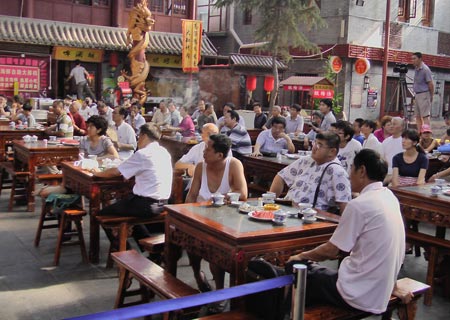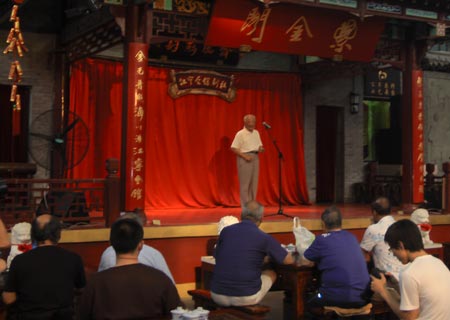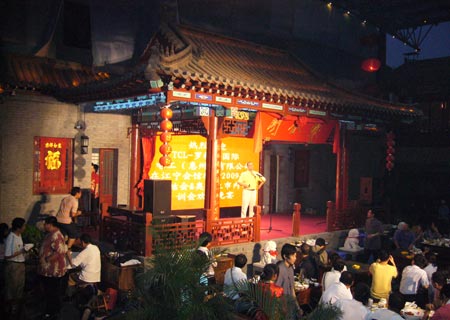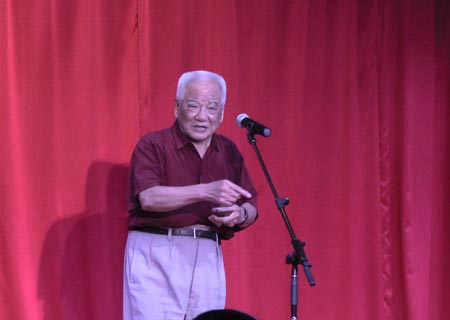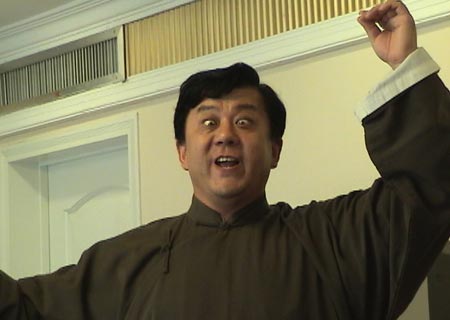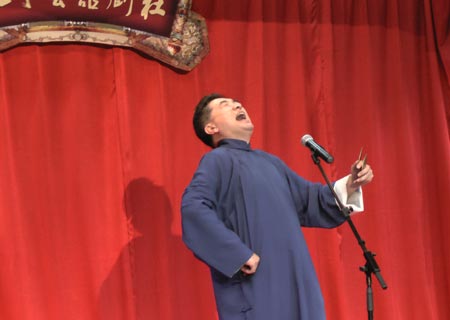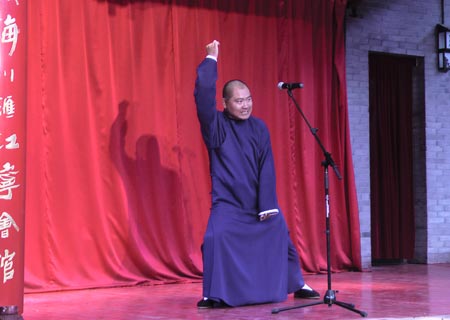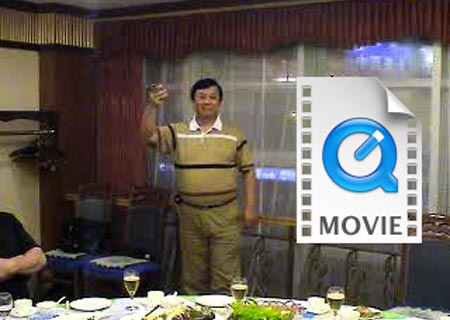Singing Dead Tales to Life: Rhetorical Strategies in Shandong Fast Tales
- Volume 26, Number 1
- Eric Shepherd
- View PDF | Download PDF
- http://journal.oraltradition.org/issues/26i/shepherd
Abstract
This article provides a brief overview of the Shandong fast tale tradition, a Chinese oral performance genre that began in rural northern China approximately four hundred years ago. Included in this overview are brief descriptions of the origins, audience composition, tale length, repertoire, and major characteristics of the stories and performances. Following these descriptions is a discussion of the expressive and rhetorical devices used by the tale-tellers as they perform live, such as formulaic language, repetition, character roles, shifts in speech register, body language, facial expressions, memory, onomatopoeia, physical humor, and hyperbolic language.
eCompanion
Yuanyangban, the primary brass rhythm-keeping device used in Shandong fast tales.
Photo: Eric Shepherd.
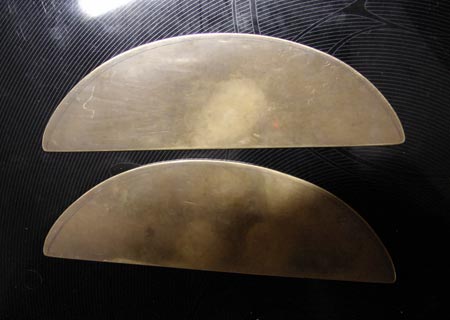

Master fast tale performer Wu Yanguo performs Cimao (Schlocky) before an audience of 30,000 people in Penglai, Shandong, May 2005.
Video: Eric Shepherd.


Master fast tale performer Wu Yanguo performs Da puke (Playing Poker) during a holiday variety show in Dongying, Shandong, May 2005.
Video: Lori Shepherd.
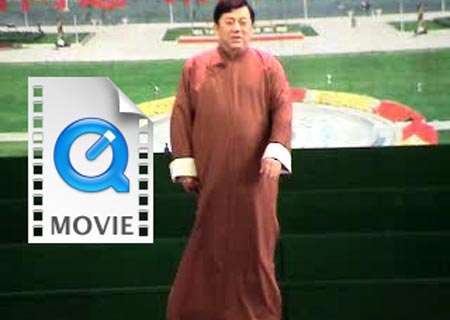

The audience at a weekend evening performance at Jiangning huiguan, July 17, 2010.
Photo: Eric Shepherd.
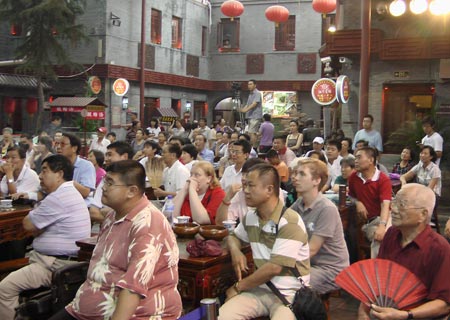

Gao Hongsheng, son of the renowned performer Gao Yuanjun, in character role at Jiangning huiguan, July 2010.
Photo: Eric Shepherd.


Master fast tale performer Wu Yanguo in narrator role, Qingdao Shanfo Hotel, July 2010.
Photo: Eric Shepherd.
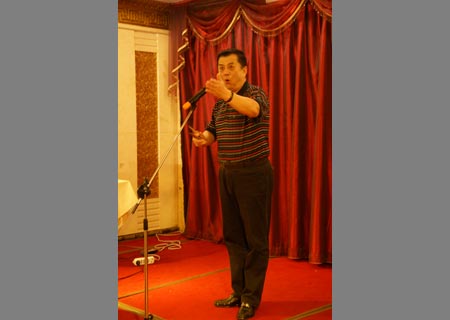

Master fast tale performer Wu Yanguo demonstrates a segment from the famous tale Wu Song Fights the Tiger, January 2005.
Video: Eric Shepherd.


Dong Jiancheng performs Shazi yao wawa (Knucklehead Wants a Tot) at Haimengyuan Hotel, July 2002.
Photo: Eric Shepherd.
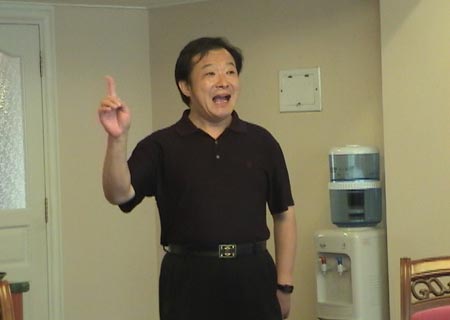

Head of the Shandong Fast Tale Research Association, Sun Zhenye, performs at Jiangning huiguan, July 2010.
Photo: Eric Shepherd.


Wu Yanguo performs Dazhen (Getting an Injection), at Haimengyuan Hotel, October 2004.
Photo: Eric Shepherd.


Gao Jingzuo performs Wu Song Gan Hui (Wu Song Goes to the Fair) at Jiangning huiguan, July 2010.
Photo: Eric Shepherd.
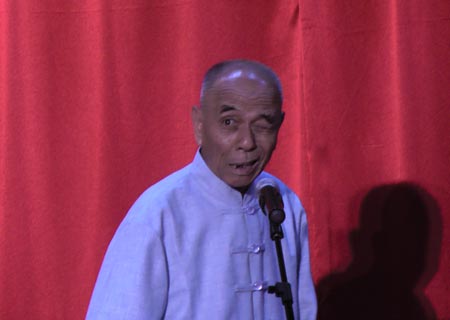

Bamboo clapper fast tale performer Li Dongfeng performs at Jiangning huiguan, July 2010.
Photo: Eric Shepherd.




